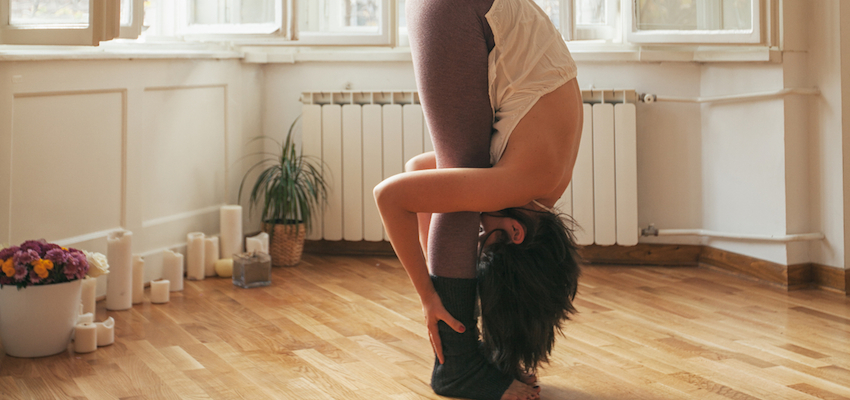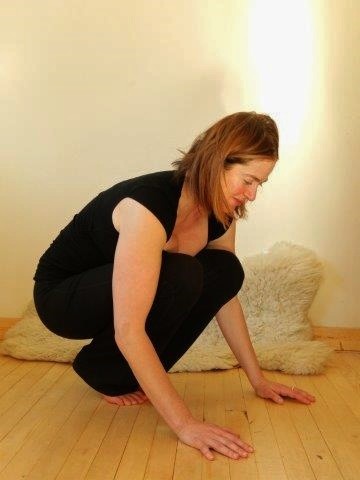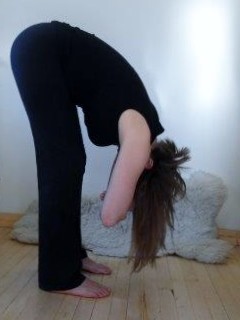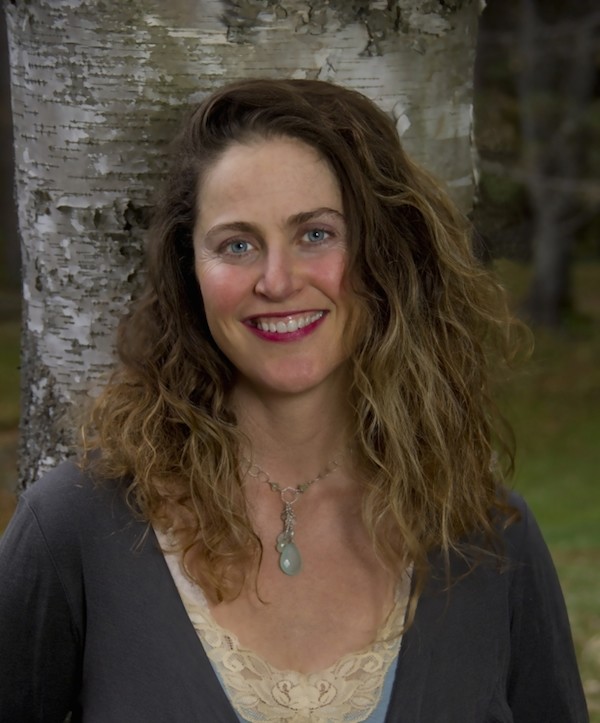The Only 2 Yoga Poses You Need For Mental & Physical Balance

You May Also Enjoy
The typical day of someone who works in an office is spent sitting. We sit eight hours at a desk. We sit commuting to work. In the evenings, we slouch on our couches to watch TV. This is simply a Read
In our increasingly busy world, where the many things pulling our attention are seemingly never-ending, we have limited time to do a practice to keep ourselves healthy and balanced both spiritually and physically. So rather than ask you to add one more thing to your already busy lives, I propose following the adage of working "smarter not harder."
I start every personal yoga practice with a squat and a hang.
These are power poses — essential poses to do even if you're not going to do anything else; they are the poses that give you the most bang for your buck.
One of the predictors of longevity is how easy it is to sit down on the ground and stand up again without assistance. The squat and hang poses are great ways to practice these important physical movements.
Many yoga poses are simply variations on the squat or the hang. A squat is a compression and the hang is an extension. They are yin and yang movements that complement each other.
Why Squat?

Squat Pose (Malasana) helps us keep a deep and fluid flexibility in the hip joints. This flexibility is something we all have at birth, but diminishes as we age due to lack of use. The hip joints have been called the holders of emotions and they are also where sexual energy resides. A hip joint that is flexible is able to move easily and release emotions, instead of keeping them locked into non-beneficial energetic patterns within the body.
Also, having supple hip joints is crucial to the proper alignment of the body when we are walking and standing. In our culture we spend far too much time sitting in chairs or in our cars and leaning forward. These postures shorten and tighten muscles in our legs (the hamstrings and Achilles tendons) and in our shoulders, necks and backs. The tendency for the upper back and neck to be out of alignment, can be directly related to headaches, rapid aging and even bone deterioration.
Our internal organs need room to move and breathe, and how young our body stays, especially internally, can be directly related to the mobility and motility of our organs — the ability of the organs to move easily, bending and compressing as we move, and to have a healthy fluid flow within and around themselves, which helps our organs retain their elasticity. The squatting position helps to reinforce the inherent mobility and motility of organs.

Why Hang?
The hang aka, Forward Bend (Uttanasana) is about lengthening and loosening the back of the body — the hamstrings especially — but also the often-tight low back muscles and shoulder girdle. Hanging the torso over is also an inversion, and will start to get the body used to being turned upside down — something most of us stop doing after we pass cartwheel age.
Allowing the body to extend in this way takes pressure off the vertebrae and allows the spine to lengthen without compression. This also gets us ready for backbending poses, where we are lengthening the spine — but also compressing it instead of lengthening and opening between the vertebrae. Hanging allows the muscles of the legs and hips to stretch, while at the same starting to strengthen them. It's also calming to the nervous system. In succession with the squat, it helps to free the hips, calm the mind and strengthen the lower body.
Adapted from Energy Medicine Yoga: Amplify the Healing Power of Your Yoga Practice by Lauren Walker (Sounds True, Oct. 2014).
Photo Credit: Stocksy
You May Also Enjoy
When you think of the benefits of yoga, you mostly think of the mind: stress-relief and heightened self-awareness. You think of its effect on the body, too, like increased flexibility and better Read
ABOUT THE AUTHOR
Lauren Walker is a teaching assistant for Donna Eden as well as a certified energy medicine practitioner and a senior student of Para Yoga creator Rod Stryker. She started the yoga program at Norwich University and now teaches Energy Medicine yoga internationally. She lives in Montana. Visit lkwalker.com.



No comments:
Post a Comment